
BATHROOM SINK BUYING GUIDE
In the modern age, there are many options from which to choose when purchasing items for a home. Bathroom sinks are no exception. Different styles, types, and colors are all within reach, but choosing which bathroom sink is right for your space can be difficult. Luckily, we’ve compiled a comprehensive bathroom sink buying guide that’s easy to follow and will help you in your purchasing decision.
TYPES OF BATHROOM SINKS
PEDESTAL SINKS
A classic freestanding sink designed to hide the drain plumbing and p-trap, which makes this sink both functional and efficient. It sits atop a small column on the floor and the back mounts to the bathroom wall. Pedestal sinks are great for tight spaces because of their inherent design. With a variety of sizes, as well as both vintage and modern designs, pedestal sinks are the perfect choice for increasing the amount of open space in almost any bathroom. Pedestal sinks offer enough counterspace to hold hand soap and grooming essentials, and their narrow base saves floor space.
CONSOLE SINKS
These sinks are large and wall-mounted with two or four decorative legs. This sink style offers a slightly larger vanity surface area, open shelving, and classical stylings. They are often integrated with a towel bar, which makes the console sink an elegant combination of form and function. Console sinks were typically a sign of wealth in the early 20th century, but today consoles sinks are an affordable way to enhance the look of any bathroom.
UNDERMOUNT SINKS
These kitchen sinks are raised into place from below and secured using mounting hardware. Undermount sinks are very functional since no part of the sink is sitting on the countertop, they offer a clean and simple look. This also makes cleanup easier, as crumbs can be swept straight into the sink. These sinks are typically used with solid surface countertops, such as granite.
WALL MOUNT SINKS
A great addition to smaller bathrooms that need to conserve as much space as possible, wall mount sinks, also called wall hung sinks, are mounted directly to the bathroom wall. Plumbing can be exposed, or an optional wall support or concealer arm can be purchased. With a wide range of styles, these sinks offer several options to complete your vintage or modern style bathroom.
VESSEL SINKS
Vessel sinks are the sink of choice for showcase bathrooms. No other sink can match the artistic beauty and classic form of the vessel sink. A vessel sink is typified by a simple or ornate bowl that sits upon a countertop. Most vessel sinks will be fed by a wall-mounted faucet typical of ancient Roman baths. However, vessel sinks can also be filled by single post faucets mounted on a small pedestal with plumbing running under the countertop.
UTILITY SINKS
Marked by their large basins and accessibility, utility sinks must be able to handle large jobs while not getting in the way. Hence, utility sinks often resemble console sinks but differentiate themselves from console sinks by typically having a deep rectangular basin as opposed to the more circular and shallower basins found in a console. Utility sinks can be wall-mounted, under-mounted, or recessed into a sink stand. A utility sink makes an exceptional bathing area for small pets.
BASIN SINKS
Basin sinks come in three unique styles. They are the perfect choice for bathrooms utilizing an existing countertop or one in which a sink counter is desired. The three different styles of Basin Sink are:
Drop-in Sinks
Also known as self-rimming or top mount, these sinks have rolled edges and drop into a new or existing countertop or bathroom vanity.
Undermount Sinks
Mounted under an existing countertop with no roll rim, exposing the edge of the countertop surface around the sink. The seamless counter-to-bowl transition make cleaning a breeze. Some undermount sinks can also be installed as drop-in sinks.
Semi-recessed Sinks
Bridging the gap between vessel and drop-in, these sinks typically stick out a few inches above the countertop for a clean yet vintage vibe.
CORNER SINKS
For smaller bathrooms, corner sinks serve two functions. First, the corner design is a tremendous space saver, allowing you to tuck your sink into shallow corners. Offering room for bath accessories, such as towel warmers, bath shelves, and towel racks. Secondly, the corner pedestal sink design adds a definitive level of class and style to a smaller bathroom. Corner sinks are available in two styles:
Corner Pedestal Sinks
Smaller bathrooms and powder rooms can look and feel like an afterthought, but a corner pedestal sink adds a measure of charm and sophistication to even the smallest powder room.
Corner Wall Mount Sinks
A terrific option for small bathrooms or bathrooms with a challenging floor plan. By utilizing corner space in combination with wall mounting the sink, you maximize the open space in a bathroom.
BATHROOM SINK SIZES
How are bathroom sinks measured? This is a common question from our customers. Bathroom sinks are measured like any other home furnishing, but one must account for where it is being placed, and if it is replacing an existing sink in a vanity.
- Round sinks are generally 16 to 20 inches in diameter.
- Rectangular sinks are generally 19 to 24 inches wide, 16 to 23 inches deep, and actual sink depth, from top of the basin to drain, is usually 5 to 8 inches.
- Sink height is usually 29 to 36 inches, for pedestal and console-style sinks.
FOR AN EXISTING VANITY
Measuring these dimensions are necessary for determining whether the new sink will fit properly in your bathroom. Measure the existing vanity from the front of the vanity to the back wall, then measure the length of the vanity. Allow 4 to 6 inches of counter space on each side to for bathroom toiletries.
FOR A STANDALONE SINK
If you are removing the existing sink and replacing it with a console or pedestal vanity, note where the existing plumbing is located, and be sure to measure that as well. Ask the retailer or manufacturer for the new sink dimensions to be sure of how much space to allow for the replacement sink.
BATHROOM SINK MATERIALS
What are bathroom sinks made from? A variety of materials from porcelain to copper to stainless steel. Not only does choosing the right material fit the aesthetic and design of your space, but it’s also important for longevity.
CERAMIC (VITREOUS CHINA, PORCELAIN, & FIRECLAY)
Ceramics are inherently easy to clean with their smooth and glossy surface, which is also stain and corrosion-resistant. This material is clay-based and durable to withstand the test of time but will crack or chip if hit with a heavy object.
ACRYLIC
The most cost-effective and lightweight material, which is plastic-based made of fiberglass or resin. Acrylic sinks can be easily installed into an existing vanity or countertop. This material is also stain and corrosion-resistant, but scratches are inherent to the material but can be buffed out.
CAST IRON
A shell of cast iron coated with porcelain enamel, this material offers the best of both worlds with vintage style and modern longevity. This material is most common among utility sinks since it can handle the toughest of jobs. Be aware, porcelain can chip away and expose the cast iron underneath which can rust. Regular cleaning and care are recommended for this type of material.
STONE
Made from crushed stones like dolomite, and state of the art materials like EcoMarmor (Cast Stone), and NativeStone, which combines jute fiber, and cement, these sinks retain heat like no other available today.
METAL (STAINLESS STEEL & COPPER)
Metal sinks are featured in more modern bathrooms, and for good reason. Stainless steel is probably the most durable sink material and can handle anything you throw at it, so it won’t crack or chip. The only downside is they show water spots cause by hard water more easily than other materials and can be scratched. For this reason, we recommend to NOT use anything abrasive to clean them with. Copper sinks are making a comeback due to their rustic and historic look and should be regularly waxed to keep their sheen look. One can let it go for a more historic look, then the copper ages to a light green color. Copper is also antimicrobial since bacteria cannot live on unsealed copper for more than a few hours, and this is a huge advantage over other materials. This living finish is called patina, which is a protective layer formed after exposure to and combining with oxygen in the air and minerals in water. Also, remember when researching metal sinks, the lower gauge of metal, the thicker it is.
FREQUENTLY ASKED QUESTIONS (FAQ)
DO BATHROOM SINKS COME IN A STANDARD SIZE?
Bathroom sinks have no standard size but see above for the most common dimensions under the bathroom sink sizes part of this article.
HOW DO I CLEAN A BATHROOM SINK?
Cleaning your bathroom sink is dependent upon the material of the sink.
Porcelain/Stainless Steel
Use water and baking soda to remove any hard stains, soap scum buildup, toothpaste residue, and hair. Coat the sink with water and sprinkle baking soda onto the sink, then rub in with a soft sponge or cloth which will form a paste to easily remove any residue or buildup. Remove any leftover baking soda using a solution mixture of 1-1, water and 3% hydrogen peroxide. Dip paper towels into this mixture, let stand for 2-3 minutes, remove, and clean it off with mild dish soap and warm water. This method can also be used for stains on cast iron sinks.
Copper/Stone/Cast Iron
Use non-abrasive cleaners, such as mild dish soap and warm water and wipe with a soft cloth, then pat dry. Easy!
Acrylic
For day to day cleaning, use non-abrasive cleaners like mild dish soap as mentioned above. Chlorine bleach will remove tough stains, use a capful after filling the sink with warm water and let sit for three minutes. You can then use a soft sponge to work at and scrub the tough stains. Finally, drain the sink and use a dry cloth to buff dry.
WHY DO BATHROOM SINKS HAVE AN OVERFLOW?
Overflows exist so the sink does not overflow when filled with water. The overflow drain also lets air into the main drain making drainage easier and quicker.

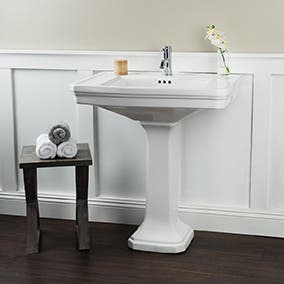
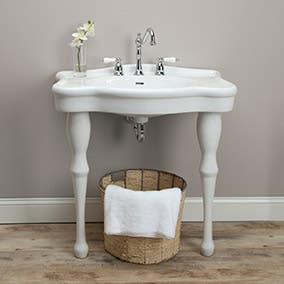
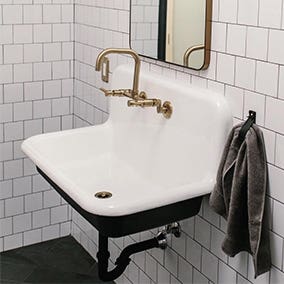
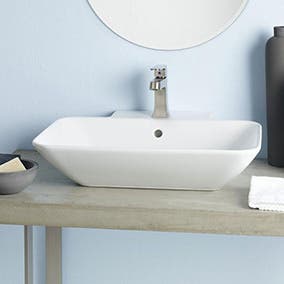
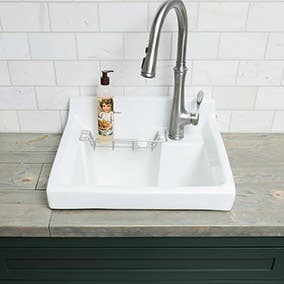
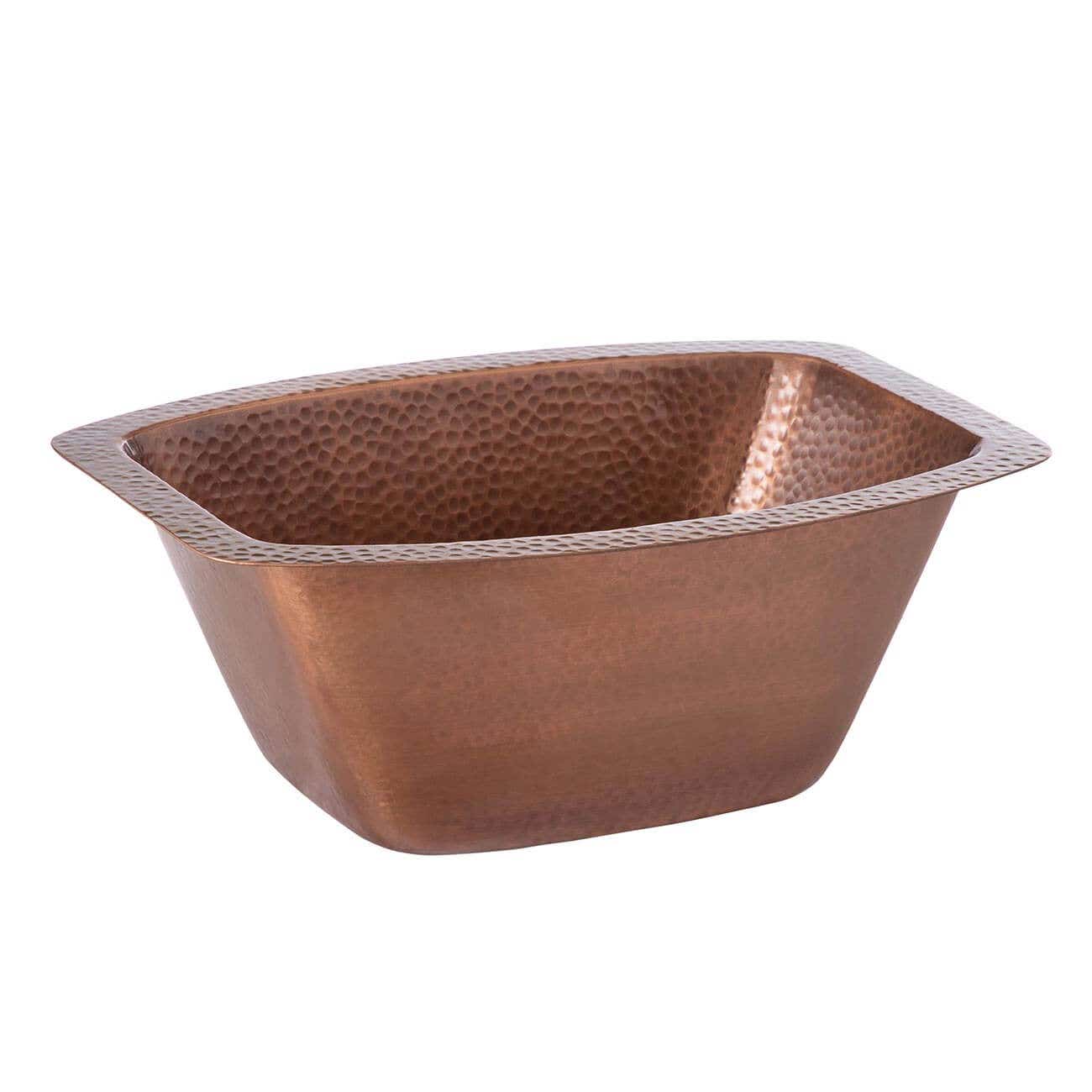
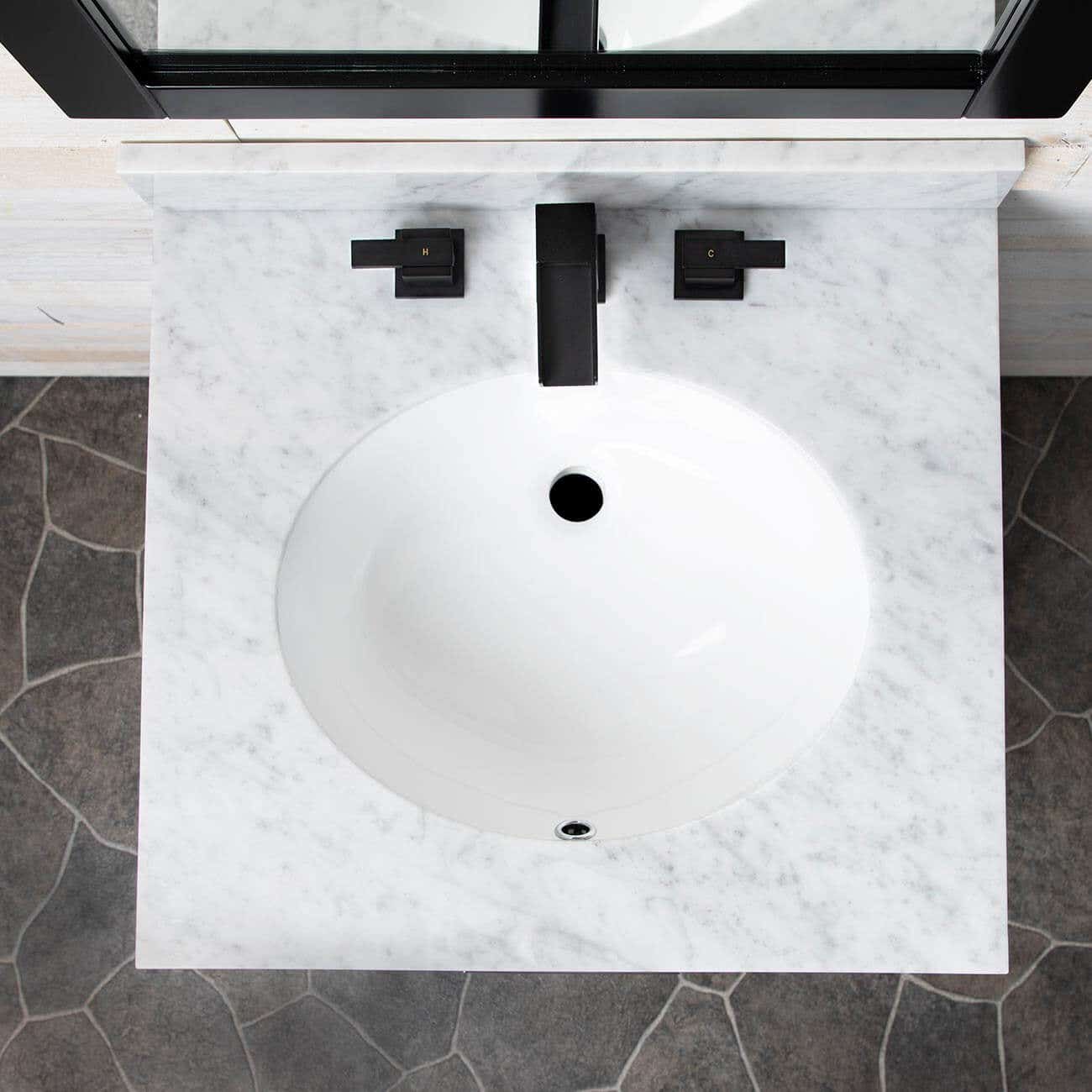
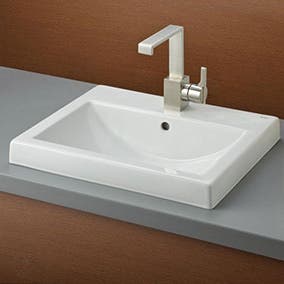
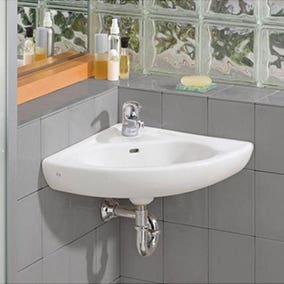
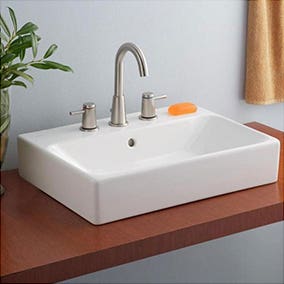
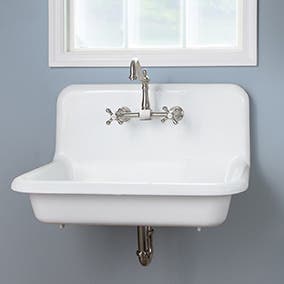
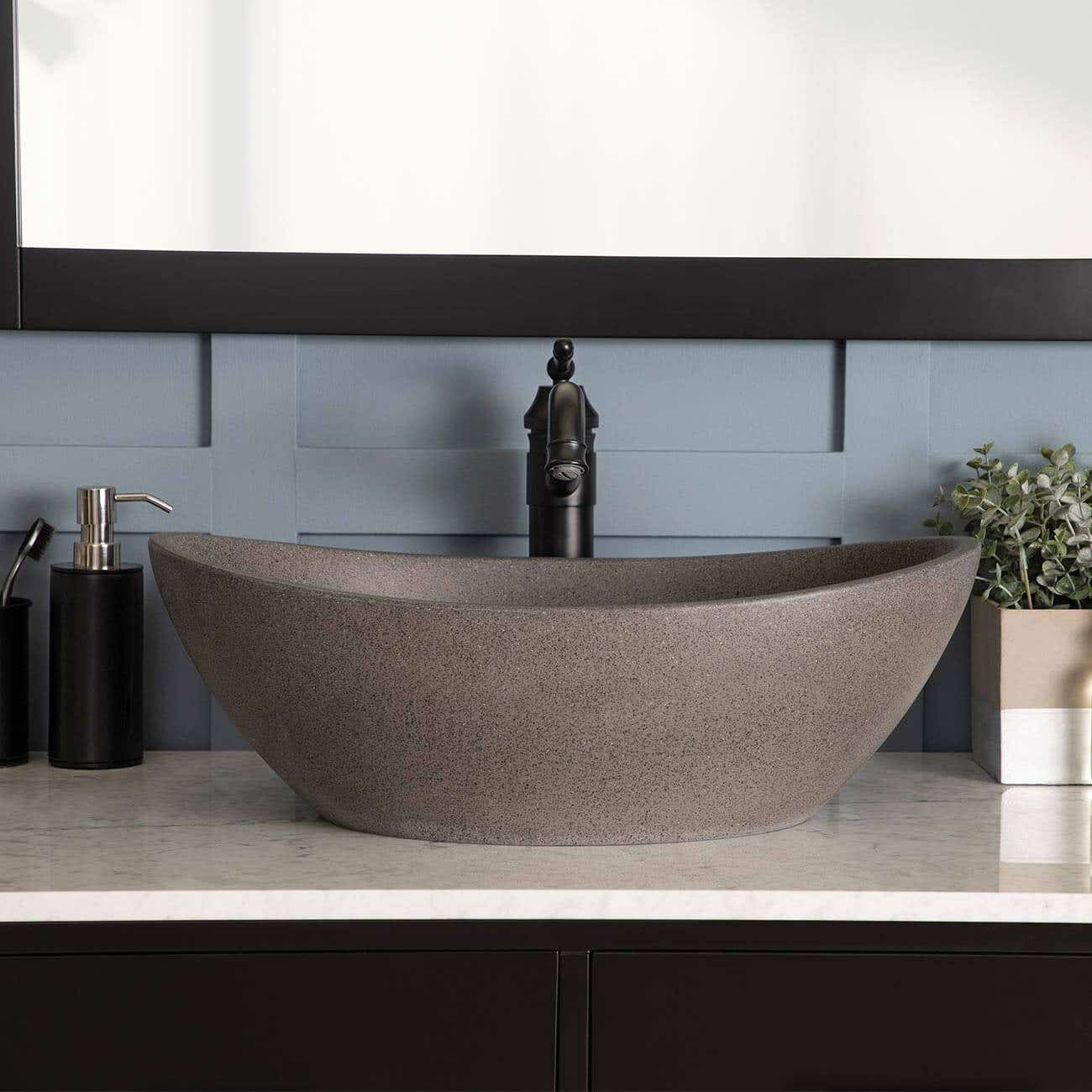
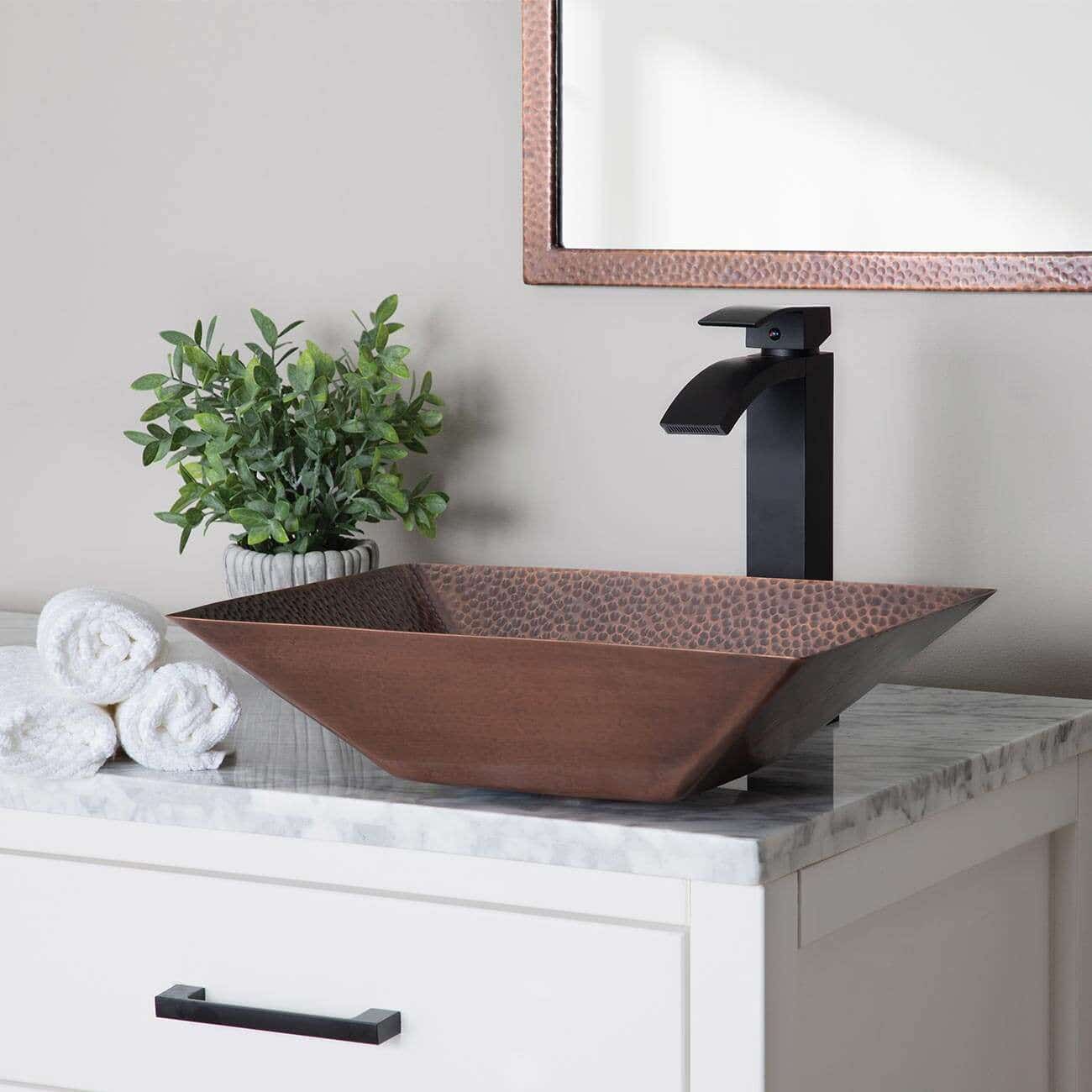
Login and Registration Form